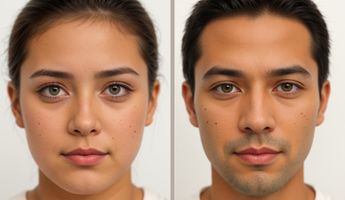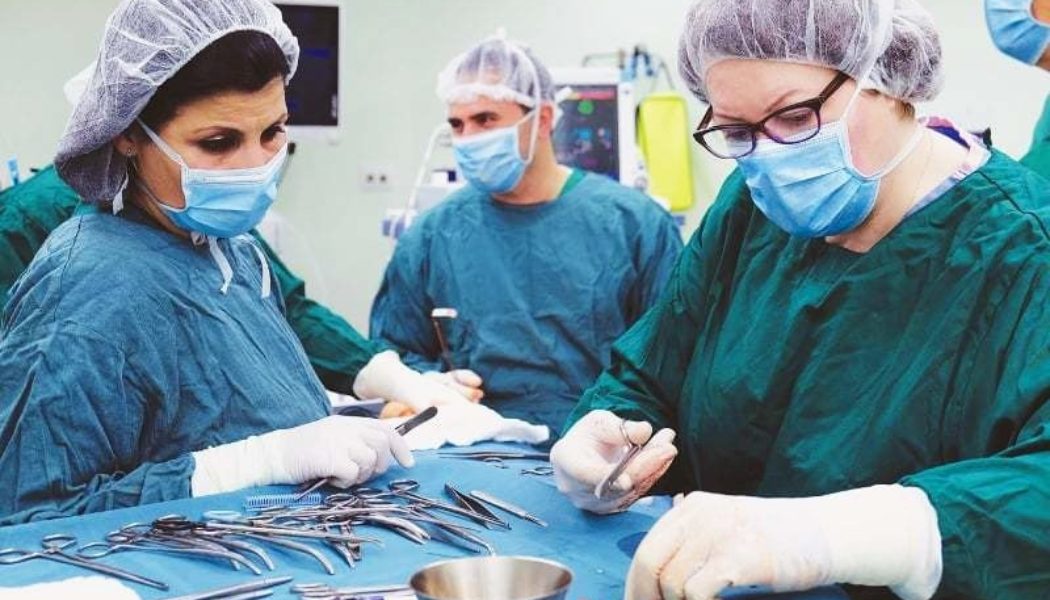Sex Reassignment Surgery (Female To Male) in Malaysia
Search and Compare the Best Clinics and Doctors at the Lowest Prices for Sex Reassignment Surgery (Female To Male) in Malaysia

Find the best clinics for Sex Reassignment Surgery (Female To Male) in Malaysia
No pricing info available
Thailand offers the best prices Worldwide
Price: $ 556
From 91 verified reviews
Zainuddin D, 07 September 2020
Great private sepcialist hospital
From 132 verified reviews
Derf B. Sibal, 19 September 2020
Staffs are very kind and responsible, great quality service! I’ve been getting a five star service in five years now! Keep up!
- Home
- Malaysia
Compare Before & After Photos of _procedure_photos.phpSex Reassignment Surgery (Female To Male)


Half-side view


Front view


Half-side view


Front view


Front view


Front view


Front view


Front view
WHY US?
At Medijump, we're making medical easy. You can search, compare, discuss, and book your medical all in one place. We open the door to the best medical providers worldwide, saving you time and energy along the way, and it's all for FREE, no hidden fees, and no price markups guaranteed. So what are you waiting for?

Free

Best Price

Widest Selection

Risk-Free
What you need to know about Sex Reassignment Surgery (Female To Male) in Malaysia

Some people are born male and some are born female. While there are some people who are transgender, whose gender identity does not match their assigned sex. Sex change surgery, also known as gender reassignment surgery (GRS) or sex reassignment surgery (SRS) is there to help these people. This is a surgical procedure that changes the sex of a person. It changes a transgender person’s physical appearance according to there identified gender. It treats gender dysphoria in these people. This includes both feminization and masculinization surgeries. In masculinization surgery, there are two domains:
- Top surgery
- Bottom surgery.
In top surgery, mastectomy is performed to remove the breasts and give your chest a more male-like contour. Bottom surgery involves increasing the length of the clitoris which is called metoidioplasty, production of a penis, and scrotum which are known as phalloplasty and scrotoplasty respectively, and removal of the uterus that is a hysterectomy. This surgery is not for everyone. A number of things are considered before opting for surgery. However, normal people with assigned gender can also go for this if they want to.
Before the operation, your assigned sex does not correspond to your gender identity. You suffer from gender dysphoria. You feel uncomfortable in your skin. However; after the surgery, you are a person of your desired sex. You are converted from a female to a male.
What is the cost of Sex Reassignment Surgery (Female To Male) in Malaysia?
Like any intricate healthcare process, the price for undergoing Sex Reassignment Surgery (Female To Male) is not a fixed figure in Malaysia. The final tally significantly sways due to issues like the patient's comprehensive health status, distinct surgical necessities, and the operating surgeon's level of proficiency. It's vital, too, to factor in the cost of post-procedure care, prescribed medicines, and extra treatments, all of which substantially contribute to the total expenditure.
Moreover, distinct clinics situated in Malaysia might provide an array of payment structures or offer financial aid alternatives. It's advisable to undertake thorough investigations or reach out to prospective clinics directly to obtain a precise cost prediction.
What does a Sex Reassignment Surgery (Female To Male) Procedure Involve?
Anesthesia is given to ensure that the patient does not suffer from pain during the surgery. Top and bottom surgeries are performed differently.
-
Mastectomy: It is performed in two ways. In one method, an incision is given around the areola and excessive fat and breast tissue are removed through it. The skin is left as it is for a year. It retracts in this period of time. This method leaves prominent scars. In the other method, excess skin is also removed along with the tissue and fat. This leaves fewer scars. After this, male-like the contour of the chest is obtained.
In the other step, female reproductive organs that are present inside your body are removed.
-
Hysterectomy: Total Hysterectomy is the removal of uterus and cervix. Another surgery, bilateral salpingo-oophorectomy (BSO) is performed to remove fallopian tubes. In this way, the entire female reproductive system is eliminated from the body.
After this, procedures for the construction of male reproductive organs begin. They include,
- Metoidioplasty: Androgenic hormones are given to increase the length of the clitoris. Length is increased to almost 1.6 to 2 inches.
- Phalloplasty: It is performed to create a penis or to increase the length of it. It can be done in 4 ways. All of these work on the same principle. A flap of skin is taken from a donor site of the body such as an arm or abdomen to make a penis out if it. It is joined to the urethra. This is the most complicated step of GRS. An erectile prosthesis is inserted into the penis to achieve an erection.
- Scrotoplasty: Scrotum is produced from labia majora and prosthetic testes are inserted into it.
How Long Should I Stay in Malaysia for a Sex Reassignment Surgery (Female To Male) Procedure?
It is a long procedure involving a number of surgeries. There is top surgery and bottom surgery. Mastectomy takes 2 to 3 hours in the operation theatre. While bottom surgery requires more time. It takes 8 to 10 hours for a female to male GRS. You should plan to stay in the area for at least 14 days after your Procedure, During this duration, your health conditions are monitored regularly and your stitches are removed after 10 to 14 days. You can go home when allowed to by your physician.
What's the Recovery Time for Sex Reassignment Surgery (Female To Male) Procedures in Malaysia?
You will have to take 2 weeks off work. After 2 weeks, you can start a light activity and can go back to office work. A Patient will need more time to get back to physical work. You can start strenuous activity 4 to 6 weeks after bottom surgery. Pain killers are given in this period to deal with moderate pain. Scars take some time to fade away. It can take years after the surgery to settle both physically and psychologically.
What sort of Aftercare is Required for Sex Reassignment Surgery (Female To Male) Procedures in Malaysia?
Following points should be considered to look after you post-surgery:
- Go for regular check-ups.
- Take your medicines as and when prescribed by the doctor.
- Live with someone who takes care of you while you recover.
- Abstain from sexual activity till allowed by your doctor.
- Do not take a bath or shower with bandages intact. It can cause infection.
- Avoid strenuous exercise in the early few days after surgery.
- Do not lift heavy objects; it puts pressure on your stitches.
- Avoid excessive movement. Take a rest.
What's the Success Rate of Sex Reassignment Surgery (Female To Male) Procedures in Malaysia?
The success rate of Sex Reassignment Surgery (Female To Male) within Malaysia depends on a spectrum of elements. Such factors encompass the proficiency and prior expertise of the surgical unit, the comprehensive health condition of the person, their mental readiness, and compliance with the suggested after-treatment attention. An abundance of research has pointed out that a majority of individuals who choose Sex Reassignment Surgery (Female To Male) acknowledge a marked enhancement in their lifestyle quality, elevated mental health, and a noteworthy contentment level with the physical transformations.
According to a study, 97% of the people who went through this surgery found their results satisfactory. You need to be sure before opting for it, as it is a lifetime decision. GRS is mainly for the treatment of dysphoric and transgender people.
Are there Alternatives to Sex Reassignment Surgery (Female To Male) Procedures in Malaysia?
The following are some alternatives to sex reassignment surgery:
- Hormone replacement therapy: this therapy aids in changing your secondary sex characteristics according to your desired sex. In the case of female to male sex change, testosterone is given. This induces hair growth and coarseness of voice. It reduces breast growth and changes in fat distribution in your body. It also stops menstruation.
- Altering physical appearance: you can alter your physical appearance, your dressing, your hair, your makeup in accordance with your desired sex. Do regular exercises to build up muscle mass which will make you look like a male.
- Psychological counseling: it will make you handle your personality. Gender reassignment surgery cannot be reversed. Therefore, you should make your decision wisely.
- Cosmetic surgery: it is a wide field covering a number of domains. It can alter your facial features, your body fat, your waist, your stomach, your chest to transform you into your desired gender. You can go for liposuction, mastectomy, Botox, fillers, Rhinoplasty, etc.
All of the methods, mentioned above are not permanent but are helpful. For permanent change, you have to go for sex reassignment surgery.
What Should You Expect Before and After the Procedure
Prior to initiating the Sex Reassignment Surgery (Female To Male), it is necessary to ensure each individual undergoes thorough psychological analysis and counseling. These checks serve to affirm the patient's emotional readiness and ability to cope with the aftermath of the procedure. In addition to mental health evaluations, multiple medical assessments are implemented to inspect their overall health state. Recognizing any pre-existing health issues is of utmost importance as they can potentially impact the result of the surgery. Regularly scheduled consultations with knowledgeable healthcare professionals are fundamental to this process. These meetings will entail in-depth explanations and discussions to help formulate a holistic understanding of the entire procedure and its ensuing effects.
After the execution of the surgical procedure, there's a need for mental readiness for an extensive recovery period. This stage typically demands diligent post-procedure care and major lifestyle adjustments. Surgical recovery isn't typically a swift process - it's a path that entails physical changes and lifestyle adaptations, necessitating a period of adjustment for the patient. The adoption of healthy habits becomes particularly important during this period. Activities like regular physical activity, adhering to a nutritious diet, and incorporating stress-relief practices are proven to carry several benefits. Moreover, in addition to the emphasis on physical recuperation, mental health should also be prioritized equally.
What are Potential Risks of Sex Reassignment Surgery (Female To Male)?
Each surgical procedure comes with inherent risks and potential complications, including Sex Reassignment Surgery (Female To Male). These might encompass general surgical risks such as infection, bleeding, or adverse reactions to anesthetic drugs. Specific to Sex Reassignment Surgery (Female To Male), there may also be healing-related risks, which could result in necrosis or lackluster cosmetic outcomes. Educating oneself about the possible complications of surgical procedures is beneficial for better preparation.
Additionally, extended exposure to hormonal treatment might escalate the risk of cardiovascular ailments or osteoporosis. There could also be mental health concerns such as depression or anxiety, which may spring from society's responses or personal adaptation to a new identity. Frequent consultations with a healthcare professional are essential to keep track of and mitigate any possible risks or complications.
Whilst the information presented here has been accurately sourced and verified by a medical professional for its accuracy, it is still advised to consult with your doctor before pursuing a medical treatment at one of the listed medical providers
No Time?
Tell us what you're looking for and we'll reachout to the top clinics all at once
Enquire Now

Popular Procedures in Malaysia
Prices Start From $497

Prices Start From $1,552

Prices Start From $500

Prices Start From $1,000

Recommended Medical Centers in Malaysia for Sex Reassignment Surgery (Female To Male)

- Interpreter services
- Translation service
- Religious facilities
- Medical records transfer
- Medical travel insurance
- Health insurance coordination
- TV in the room
- Safe in the room
- Phone in the room
- Private rooms for patients available

- Interpreter services
- Translation service
- Religious facilities
- Medical records transfer
- Medical travel insurance
- Health insurance coordination
- TV in the room
- Safe in the room
- Phone in the room
- Private rooms for patients available

- Interpreter services
- Translation service
- Religious facilities
- Medical records transfer
- Medical travel insurance
- Health insurance coordination
- TV in the room
- Safe in the room
- Phone in the room
- Private rooms for patients available

- Interpreter services
- Translation service
- Religious facilities
- Medical records transfer
- Medical travel insurance
- Health insurance coordination
- TV in the room
- Safe in the room
- Phone in the room
- Private rooms for patients available

- Interpreter services
- Translation service
- Religious facilities
- Medical records transfer
- Medical travel insurance
- Health insurance coordination
- TV in the room
- Safe in the room
- Phone in the room
- Private rooms for patients available

- Interpreter services
- Translation service
- Religious facilities
- Medical records transfer
- Medical travel insurance
- Health insurance coordination
- TV in the room
- Safe in the room
- Phone in the room
- Private rooms for patients available

- Interpreter services
- Translation service
- Religious facilities
- Medical records transfer
- Medical travel insurance
- Health insurance coordination
- TV in the room
- Safe in the room
- Phone in the room
- Private rooms for patients available

- Interpreter services
- Translation service
- Religious facilities
- Medical records transfer
- Medical travel insurance
- Health insurance coordination
- TV in the room
- Safe in the room
- Phone in the room
- Private rooms for patients available

- Interpreter services
- Translation service
- Religious facilities
- Medical records transfer
- Medical travel insurance
- Health insurance coordination
- TV in the room
- Safe in the room
- Phone in the room
- Private rooms for patients available

- Interpreter services
- Translation service
- Religious facilities
- Medical records transfer
- Medical travel insurance
- Health insurance coordination
- TV in the room
- Safe in the room
- Phone in the room
- Private rooms for patients available
Sex Reassignment Surgery (Female To Male) in and around Malaysia
About Malaysia
Malaysia is a rich culturally-oriented tourist destination and has a beautiful blend of modernization with a relaxed lifestyle. The population of the country is 32 Million people and Malaysia’s economy ranks in the fourth position in terms of size in Southeast Asia, The electronics, automotive, and construction industries are the biggest industries in Malaysia. The capital is Kuala Lumpur and It is the country’s largest urban area and is the cultural, commercial, and transportation center.
Presently, Malaysia stands as a renowned destination for its exemplary healthcare facilities, offering these high-quality services at notably affordable costs when juxtaposed against other globally recognized medical nations. As per predictions from the Ministry of Finance, the influx of medical tourists is expected to surge beyond 2,000,000 million by 2020. This forecasted growth can be largely attributed to the exemption of taxes imposed on medical bills.
The cities that top the list of medical travel include Kuala Lumpur, Penang, Selangor, Sarawak, and Melaka. Statistics reveal that among the 1.2 million patients who have visited Malaysia for medical care in 2017, 600,000 alone were from Indonesia. The most-sought-after medical procedures are cosmetic surgery, Brazilian butt-lift, and dental surgery. Malaysia is a favorite destination among medical tourists globally for the following reasons.
- The Country possesses a plethora of world-class hospitals that have high-tech medical equipment.
- All treatment plans match very high ethical medical standards.
- The doctors and paramedical staff are well-qualified.
- All procedures will cost you 50% less than other well known medical countries.
- English is a major language and there is good two-way communication between the doctors/medical staff and the patients.
- After an elective surgical operation, many patients will stay on in Malaysia to holiday and recuperate.
Some of the top-rated five-star medical tourism hospitals within the country include Columbia Asia Extended Care Hospital situated in Selangor, Sunway Velocity Medical Centre located in Kuala Lumpur, and Sunway Medical Centre based in Selangor.
Popular parts of Malaysia
Undoubtedly, Malaysia's appeal is immediately evident. The variety of experiences it offers, from bustling cities to idyllic landscapes, entrances visitors. Malaysia's multiculturalism, expressed through unique customs and diverse cuisines, only enhances its charm. This draws tourists from all corners of the globe, leaving them yearning for more. Succinctly, the splendor and diversity of Malaysia make it hard to resist repeated visits.
- Kuala Lumpur has a mix of Malay, Indian, and Chinese influence which gives you a great selection of culinary delights to explore in this city. Interesting sights such as the Petronas Towers which is one of the tallest twin towers in the world. the Perdana Lake Gardens and the Menara KL Tower provide plenty of enjoyable distractions.
- Penang is an island on the west coast and the colonial city of Georgetown was made a UNESCO World Heritage Site and you can enjoy the museums, seaside fort, historic buildings. Penang is considered one of the best places in Southeast Asia to sample delicious street food of all types.
The must-visit cities in Malaysia renowned for their world-class appeal include Malacca, Langkawi, Kuching, Spaden, Johor Bahru, and Taiping.
Weather and Climate in Malaysia
Malaysia is a place that's warm all year round, as being in the tropical region. But since it's close to the ocean, the air can get pretty moist. Still, it's re-assuring to note that it doesn't get too hot, with temperatures usually staying between a pleasant 20°C and 30°C all throughout the year. Those who prefer cooler weather can visit the highlands in Malaysia, where it's generally chillier.
When planning a trip it's important to take into account the best times to visit different parts of the country. If you're eyeing the east coast, try to schedule your visit between March and September; this period is relatively drier than other months. On the other hand, the west coast is better visited from November to August. It's best to avoid the heavy rains which usually occur from September to October. With this information, you can plan to get the best out of your trip to Malaysia.
Getting around in Malaysia
The Country has a well-developed transport network and efficient rail links which makes all travel around the country easy.
It is advisable to book domestic transport well in advance during the main festivals, such as Chinese New Year, Hari Raya Pusa and Hari Raya Haji. Domestic flights and domestic express bus services are often sold out weeks before these festivals. All the major cities in Malaysia have an airport and most budget airlines operate into the country.
In the larger cities of Malaysia, you'll find that transportation is convenient with many kinds of vehicles to choose from. Specifically in Kuala Lumpur, the capital city, there's a broad range of public transportation options to get around. You can hop on buses for an affordable ride or opt for minibusses, locally known as "bas-mini" to navigate through narrower streets.
Furthermore, taxis are easily accessible in Kuala Lumpur, providing a convenient alternative when you prefer more comfort or need to reach a specific destination quickly. If you would like to experience something traditional and fun, pedicabs or "trishaws" as they are commonly known, are present in some parts of the city offering you a unique ride.
Additionally, Kuala Lumpur also boasts a well-connected train network, including rapid transit and commuter rail services, facilitating quick and efficient travel across the city. It's safe to say that in Kuala Lumpur, moving around is smooth and easy, thanks to these diverse means of transportation.
In Malaysian towns and cities, various modes of transport are used, including ferry services. In cities, the rail network is a good way to get around, especially the KL Monorail and transit trains.
Tourist Visas in Malaysia
The residents of the following countries holding a valid passport are the ones required to apply for a Malaysian tourist visa. China, India, Sri Lanka, Nepal, Myanmar, Bangladesh, Pakistan, Bhutan, Serbia, and Montenegro
All other nationalities will not need a visa to visit Malaysia. You will normally be given permission to stay for 3 months on arrival. Visas for longer stays or for non-tourist purposes must be obtained from the nearest Malaysian diplomatic mission before you travel.
The Malaysian authorities are running a vigorous campaign against illegal immigration. Don’t overstay your visa, or violate the terms of entry. Even if you overstay for just a few days, you can be fined, detained, deported, and blacklisted. Flight costs will be the responsibility of the individual.
Additional Information
- Local currency: Ringgit, denoted as RM, is the national Malaysian Currency. Printed in various colors, size, and physical appearance, the Bank Negara Malaysia and the National Bank of Malaysia control the issuing of currency. Malaysia follows the Chinese Model where it has cut itself away from comparing it to US dollars. The Malaysian currency is as such not traded internationally.
- Money and Payments: world-class restaurants and retail stores accept all forms of Credit cards. In case you are not holding the requisite quantity of local currency with you, you can exchange them at exchange bureaus. You can even take out cash from the ATMs.
- Local language: The official language is Malay and English is also widely spoken, the state has a cosmopolitan population, languages such as Arabic, Hindi, Tamil, are also spoken.
- Public holidays: The local population celebrates the Gregorian New year as well as the Chinese New Year. Since a large part of the population is Indian, Malaysia also celebrates some of the traditional Indian festivals such as Pongal, Diwali, and Tamil New Year.
Popular Searches
- Plastic Surgery in Thailand
- Dental Implants in Thailand
- Hair Transplant in Thailand
- Breast Augmentation Thailand
- Gastric Sleeve in Thailand
- Gender Reassignment Surgery in Thailand
- Laser Hair Removal in Bangkok
- Botox in Bangkok
- Dermatology in Bangkok
- Breast Augmentation in Bangkok
- Coolsculpting in Bangkok
- Veneers in Turkey
- Hair Transplant in Turkey
- Rhinoplasty in Turkey
- Stem Cell Therapy in Mexico
- Rhinoplasty in Mexico
- Liposuction in Mexico
- Coolsculpting in Tijuana
- Rhinoplasty in Korea
- Scar Removal in Korea
- Gastric Sleeve in Turkey
- Bone Marrow Transplant in India
- Invisalign in Malaysia
- Plastic Surgery in the Dominican Republic
- Tummy Tuck in the Dominican Republic
- Plastic and Cosmetic Surgery in Poland
- Rhinoplasty in Poland
- Hair Implant in Poland
- Dental Implants in Poland
- IVF in Turkey

